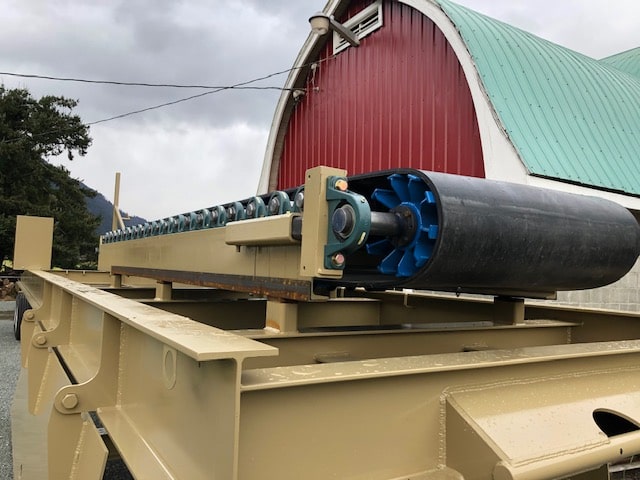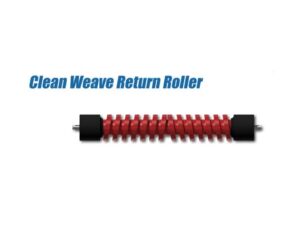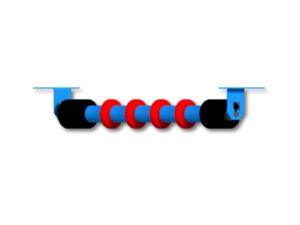Drum and wing pulleys are used in conveyor systems across various industries to transfer materials and products from one location to another. The versatility and adaptability of these pulleys make them invaluable components for driving the conveyor belt and managing belt tension and tracking.
While drum and wing pulleys can be found in many settings where materials need to be transported, they are most commonly used for mining, agriculture, manufacturing and assembly lines, warehousing and distribution, food processing, bulk material handling, and airports.
As one of the leading drum and wing pulley manufacturers in the industry, Luff specializes in designing and producing high-quality pulleys that ensure efficiency, durability, and reliability. To understand the power of the right drum and wing pulleys, let’s take a look at the negative impact when the wrong type is used.
What Happens If the Wrong Drum and Wing Pulley Is Used?
Choosing the wrong drum and wing pulley for a conveyor system can lead to a variety of issues that negatively impact the system’s performance, efficiency, and longevity, including:
- Inefficient power transmission – The wrong pulleys can lead to increased energy loss and friction between the motor and the conveyor belt, reducing the overall efficiency of the system.
- Belt slippage and misalignment – Incorrectly sized or designed pulleys may cause the conveyor belt to slip or become misaligned. This can lead to increased wear and tear, premature belt failure, and potential damage to other conveyor components.
- Reduced load capacity – If the pulleys are not designed to handle the required load capacity, they may become overstressed or fail altogether, causing system downtime and potential damage to other components.
- Uneven load distribution – The wrong pulleys may not distribute the load evenly, putting excessive strain on specific areas of the conveyor system. This can lead to premature wear or failure of the pulleys or other components.
- Increased noise and vibration – Excessive noise and vibration can affect the work environment.
- Decreased system lifespan – The wrong pulleys may cause increased wear and tear on the conveyor system, reducing its overall lifespan and leading to higher replacement and maintenance costs.
- Non-compliance with regulations – Choosing pulleys that do not meet industry-specific standards or regulations can result in non-compliance, leading to potential fines, legal issues, or even system shutdowns.
- Operational issues – The wrong pulleys may not function properly in the specific application or environment, causing issues such as corrosion, poor grip on the belt, or inadequate performance in extreme conditions.
To avoid these problems and ensure the optimal performance and longevity of a conveyor system, it’s crucial to carefully select the appropriate drum and wing pulley based on the specific requirements and conditions of the application.
The Benefits of Choosing the Right Drum & Wing Pulley
Now that we’ve covered the downside of operating with the wrong conveyor belt components, let’s take a look at what a well-designed conveyor system can do for your operations.
- Efficient power transmission – Selecting the correct size and type of pulleys ensures smooth and efficient power transmission between the motor and the conveyor belt. This minimizes energy loss and reduces wear and tear on the system.
- Proper belt tension and tracking – The right pulleys help maintain appropriate belt tension and tracking, which in turn reduces the risk of belt slippage, misalignment, or premature wear. This results in a longer belt life and reduced maintenance costs.
- Load capacity and distribution – When the pulley can handle the load capacity and distribute it evenly, the chances of pulley or conveyor system failure due to overloading is reduced.
- Reducing noise and vibration – Properly selected pulleys can minimize noise and vibration, leading to a quieter and more stable operation. This not only benefits the working environment but also reduces the likelihood of component damage due to excessive vibration.
- Increased system lifespan – The right pulleys, when coupled with proper maintenance, can increase the overall lifespan of a conveyor system. This results in lower replacement costs and reduced downtime.
- Application-specific requirements – Different applications may have unique requirements for drum and wing pulleys, such as specialized materials or coatings to handle specific environmental conditions or industry standards. Selecting the right pulleys for the specific application ensures optimal performance and compliance with any applicable regulations.
Tips to Maintain Your Conveyor System
Like all machinery, conveyor systems require proper maintenance to ensure that it continues to operate efficiently. Proper maintenance helps avoid costly repairs and improves the lifespan of your entire conveyor system. For something that is so crucial to your operations, it’s important to take the time to follow good maintenance practices:
- Conduct regular inspections for signs of wear, damage, or misalignment
- Lubricate bearings according to the drum and wing pulley manufacturer’s specifications
- Maintain proper belt tension to prevent strain on pulleys
- Monitor belt tracking to ensure it remains centred
- Keep pulleys and surrounding areas clean from debris and buildup
- Replace worn or damaged components as needed
- Train staff in proper maintenance procedures and safety protocols
- Implement a comprehensive preventive maintenance program
- Maintain detailed records of maintenance activities
- Consult with experts or manufacturers for guidance on best practices
Last but certainly not least, it’s important to work with an experienced drum and wing pulley manufacturer that can design and engineer solutions for you. At Luff Industries, we have an in-house engineering team that can help optimize your conveyor belt system. Contact us for more information.




